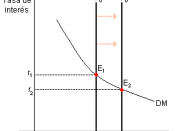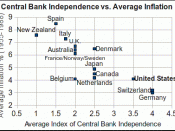Policies Since 1994
The aims of the RDP were to meet the basic needs of the people and to build the economy. Secondly that wanted to reduce the budget deficit and wanted to ensure greater macroeconomic stability (Incentive to foreign investment). The last aim was to reduce gvnt dissaving and gvnt expenditure. The ways in which RDP wanted to do this was to redistribute wealth by restructuring demand towards labour intensive goods and creating a virtuous cycle by establishing domestic markets. Along with this an increase in public sector investment a redirection of gvnt spending.
The uncoordinated nature of RDP meant poor implementation, public sector investment was neglected, budget for RDP was too little and reduction of deficit was unsuccessful.
Following the failure of the RDP, there was pressure from businesses and labour for growth and job creation. Gear recognised that reduction of the defit was insufficient for growth and that the following policies would be implemented to achieve the aims of GEAR.
SA currency plunged after the poor implementation of RDP and uncertainty of gvnt policy meant there was a lack of investment from the private sector. The growing debt and negative growth meant gvnt spending had to be conservative in fear of losing economic sovereignty. The policy aims were to achieve 6% growth and create 400000 jobs a year. A goal of a stable environment to encourage private and public investment would be the result of attempts to reduce gvnt dissaving, reducing consumption expenditure and escaping the debt trap. Another goal making the economy more competitive was by taking advantage of the depreciation of the rand to keep the real effective exchange rate stable at a competitive level and counteracting inflationary pressures caused by depreciation through monetary policy, the aim...


